🔥 Generate online proposals and more with sequential form placeholders
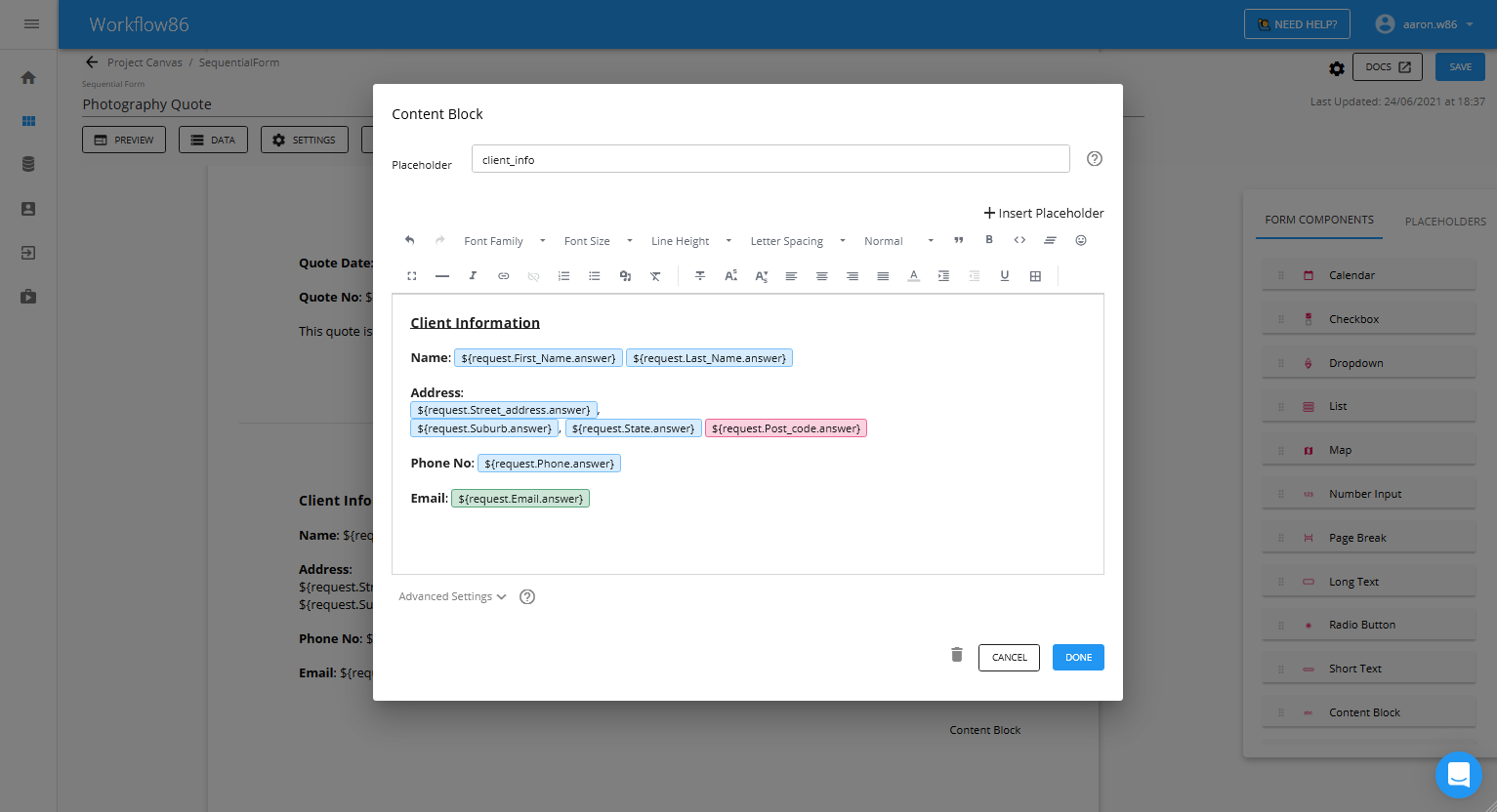
We’ve just released one of our most highly requested features: the ability to use placeholders to dynamically render content inside of the sequential form.
This feature means you can now print out information directly into the sequential form rather than printing that information in the sequential form email. This feature also opens up a whole new range of use cases including the ability to create dynamic proposal documents and invoices using the sequential form.
See how we used this to create a workflow to auto-generate online proposals below 👇
Online Quote Generator
This is a workflow which highlights how the sequential form placeholders feature can be used to generate dynamic proposals and quotes.

Inquiry Form
The workflow begins with a customer filling out an inquiry form where they enter in their details, request date, types of services they would like to request and so on.

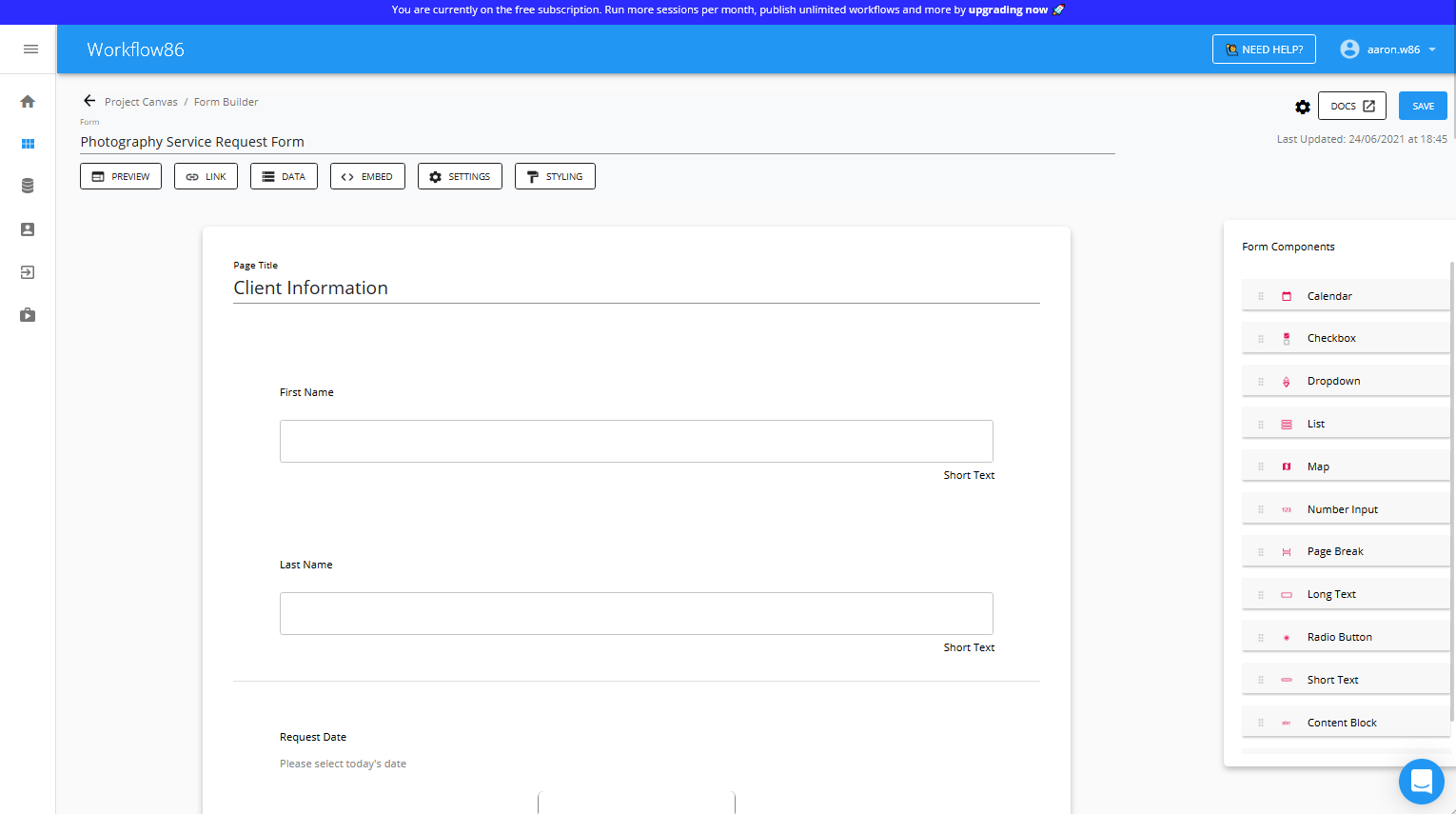
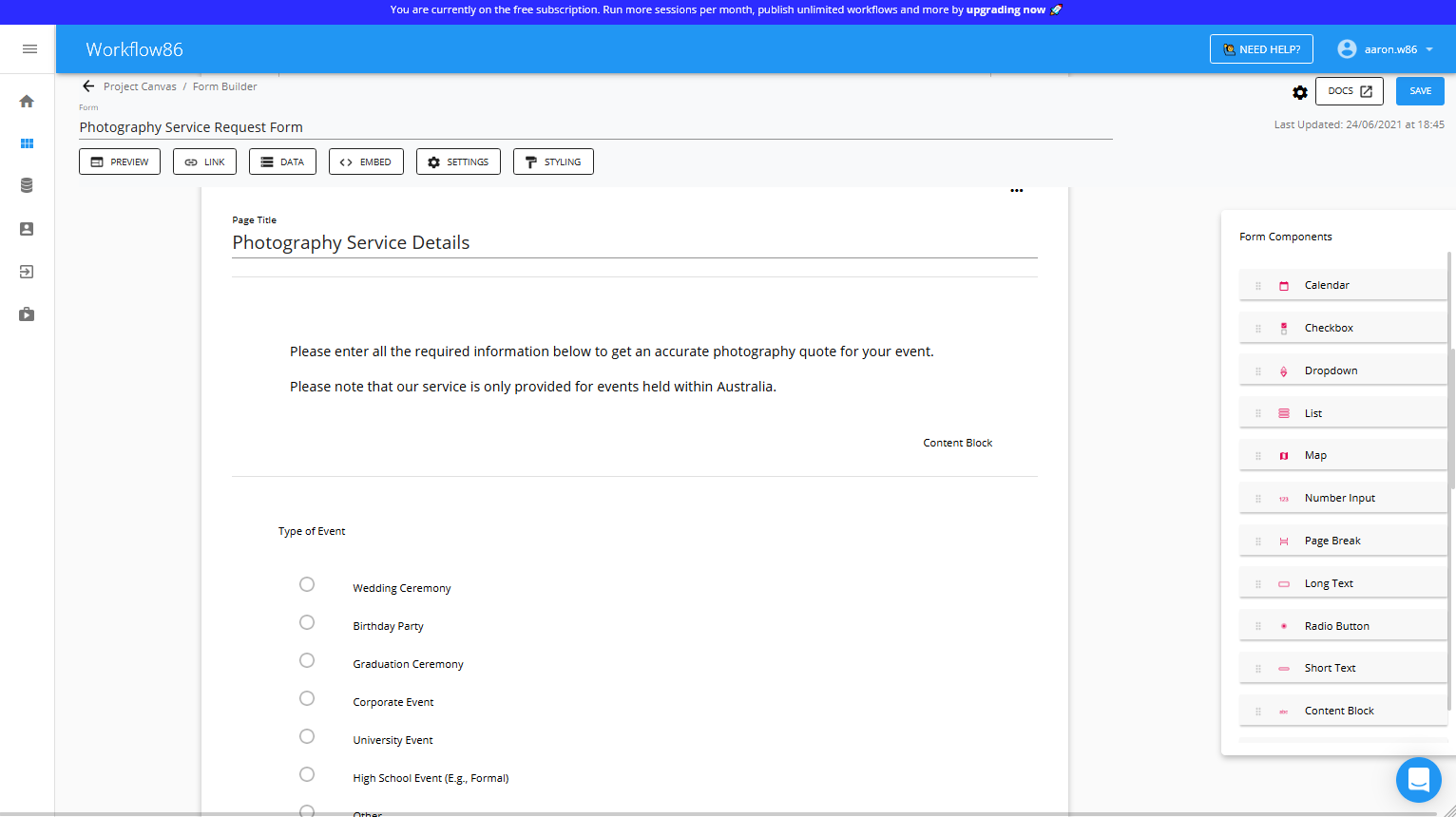
Calculate Quote Steps
Using the data collected from the Inquiry Form, we use a combination of conditional logic, list transform and calculator components to process and then calculate the overall quote according business logic and rules set by the business.

For example, the conditional logic component is used to add additional services and costs. One example is if the user has answered “No” to the question “Are you located in Sydney?”, then an additional $50 fee will be added to the quote.
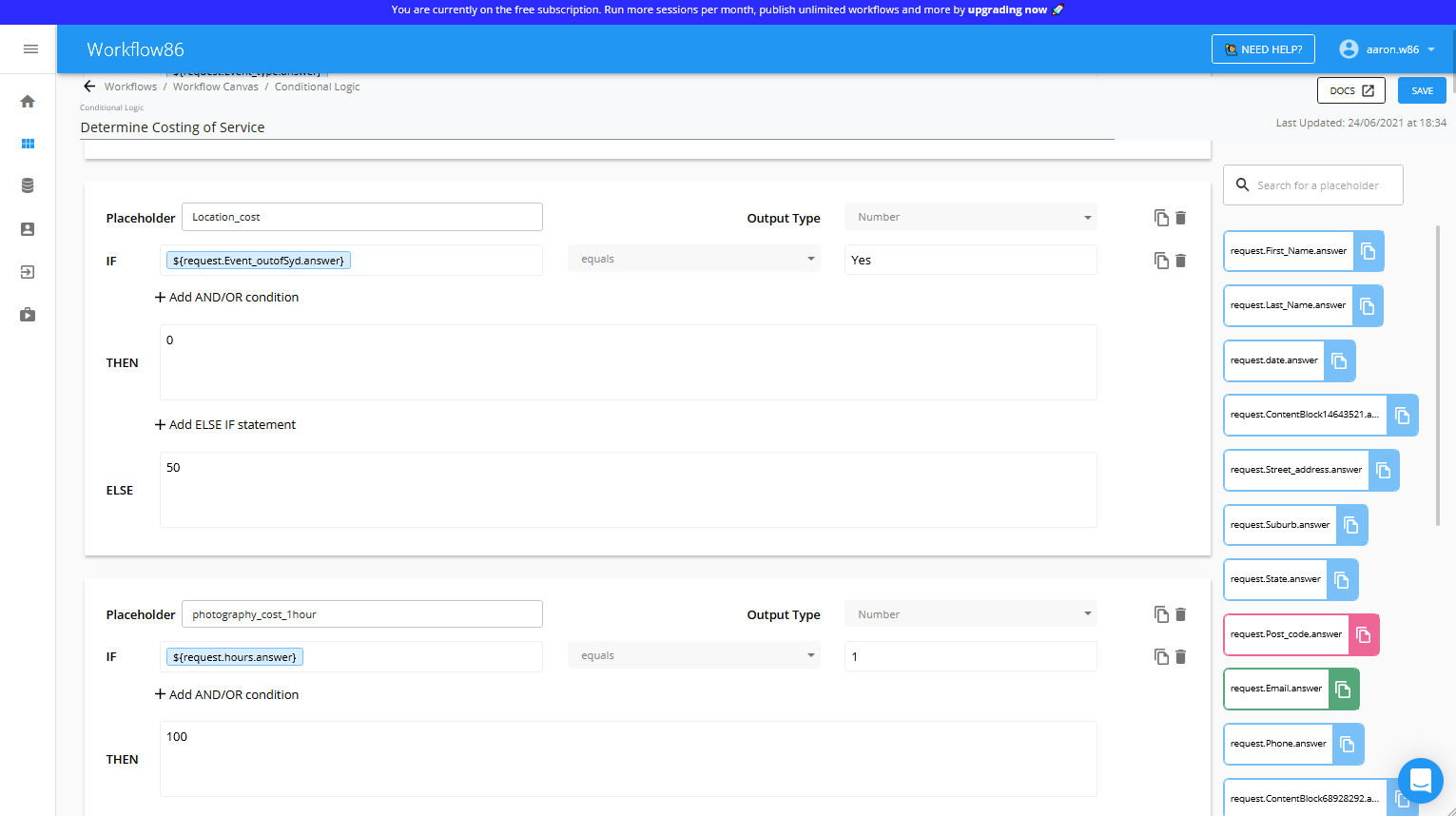
The List Transform component is used to collate all the additional services into a list to then be passed into the calculator component.

The Calculator component is then used to determine the prices to be included in the online quote:
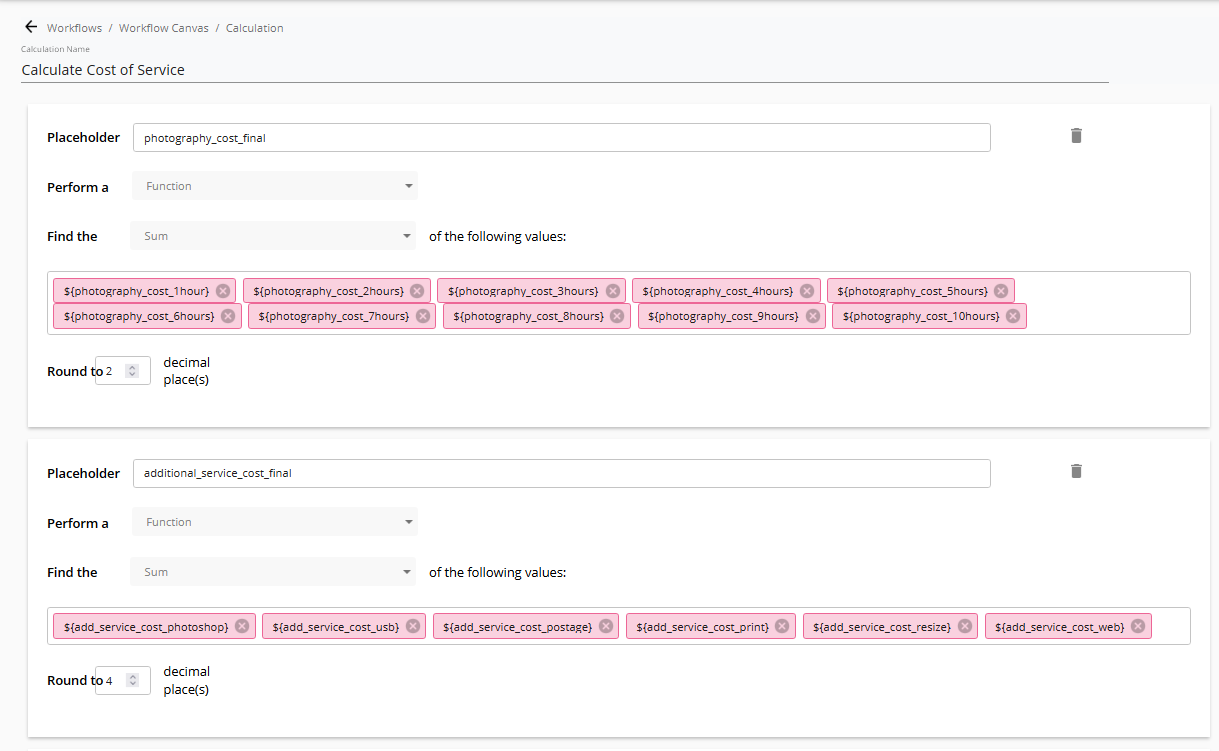
Creating the online quote
With all the required placeholders connected into the sequential form, we can now use the new sequential form placeholders feature to dynamically merge that data into the seqential form that will be generated when the workflow is run.

Below, you can see how the placeholders have been inserted into a content block inside the form:


When the workflow runs, it will process all the data from the form, go through all the calculation steps, and then render all of this information into the sequential form. The user can then submit that sequential form to accept the quote and continue the workflow.
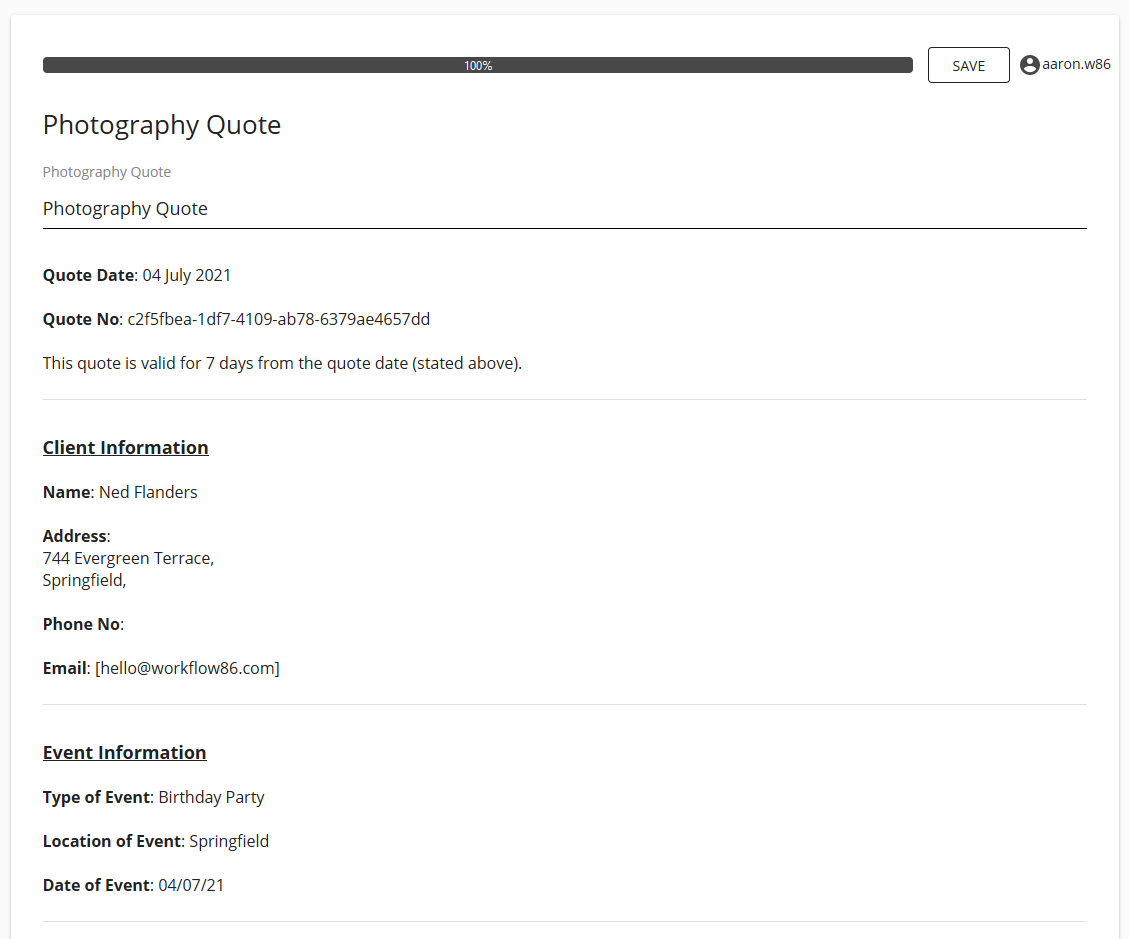
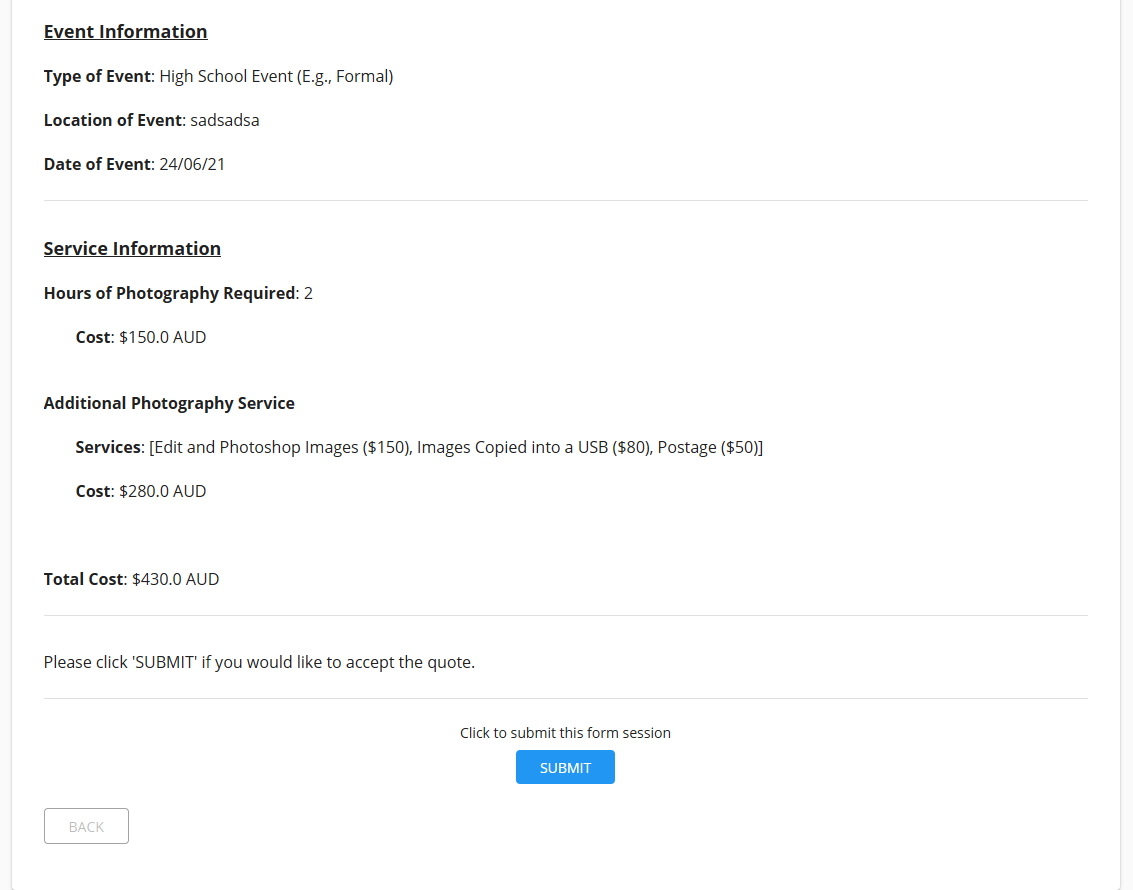
Sign up for early access 👇
To clone and run workflows in this article, be sure to sign up for early access at workflow86.com/signup
We are releasing invitations to early access users in batches over the coming weeks, so sign up now to get your spot.